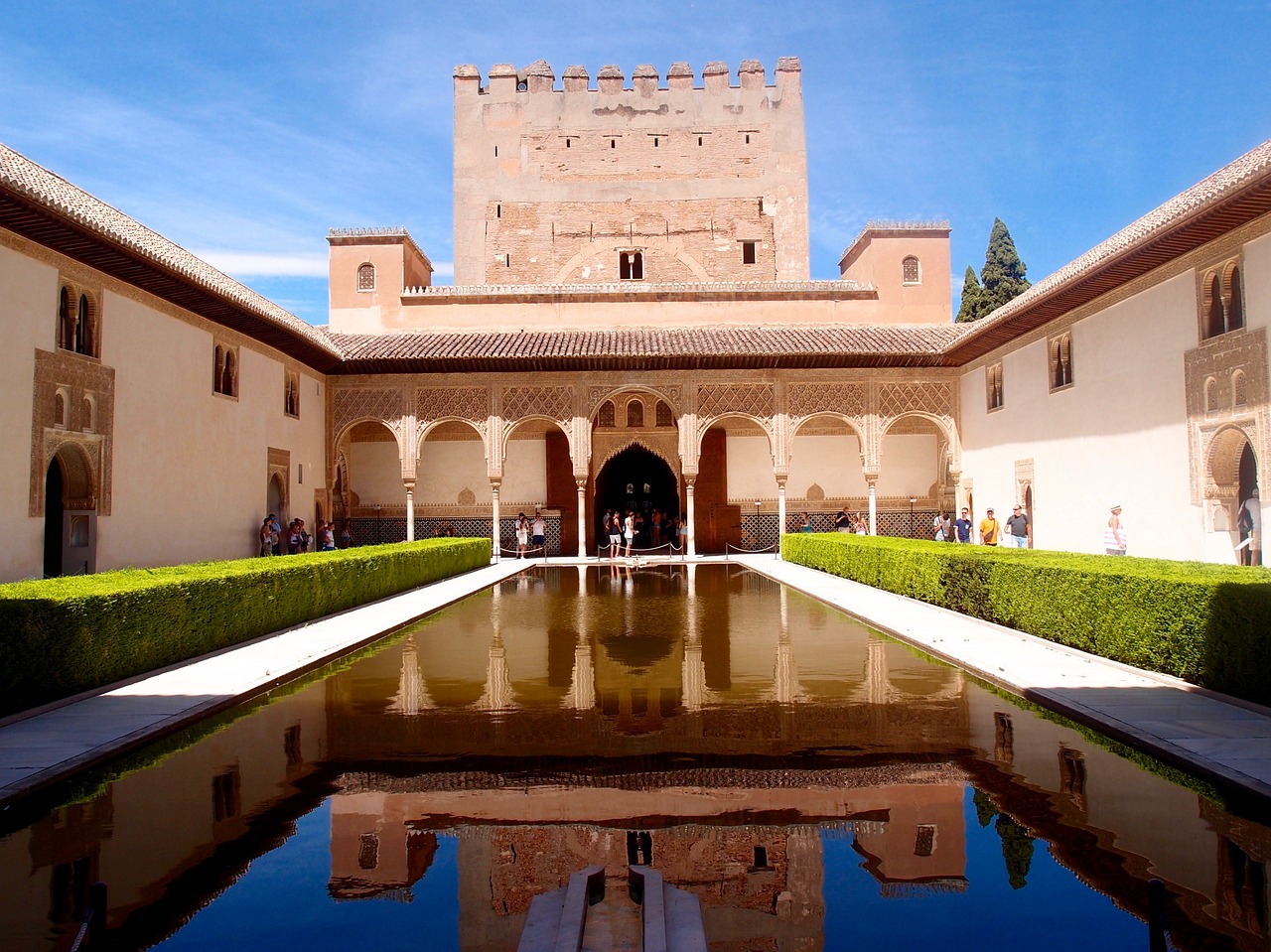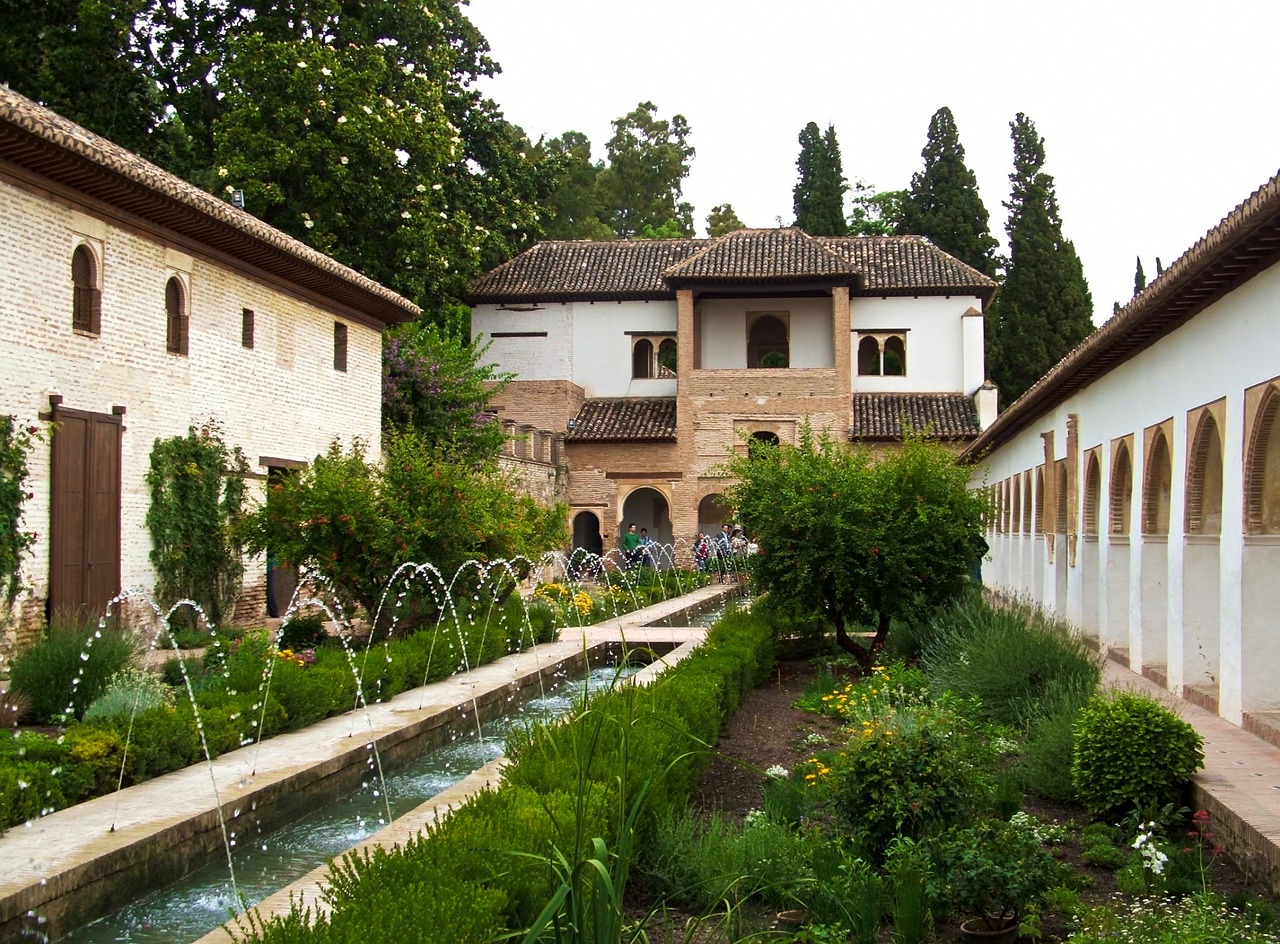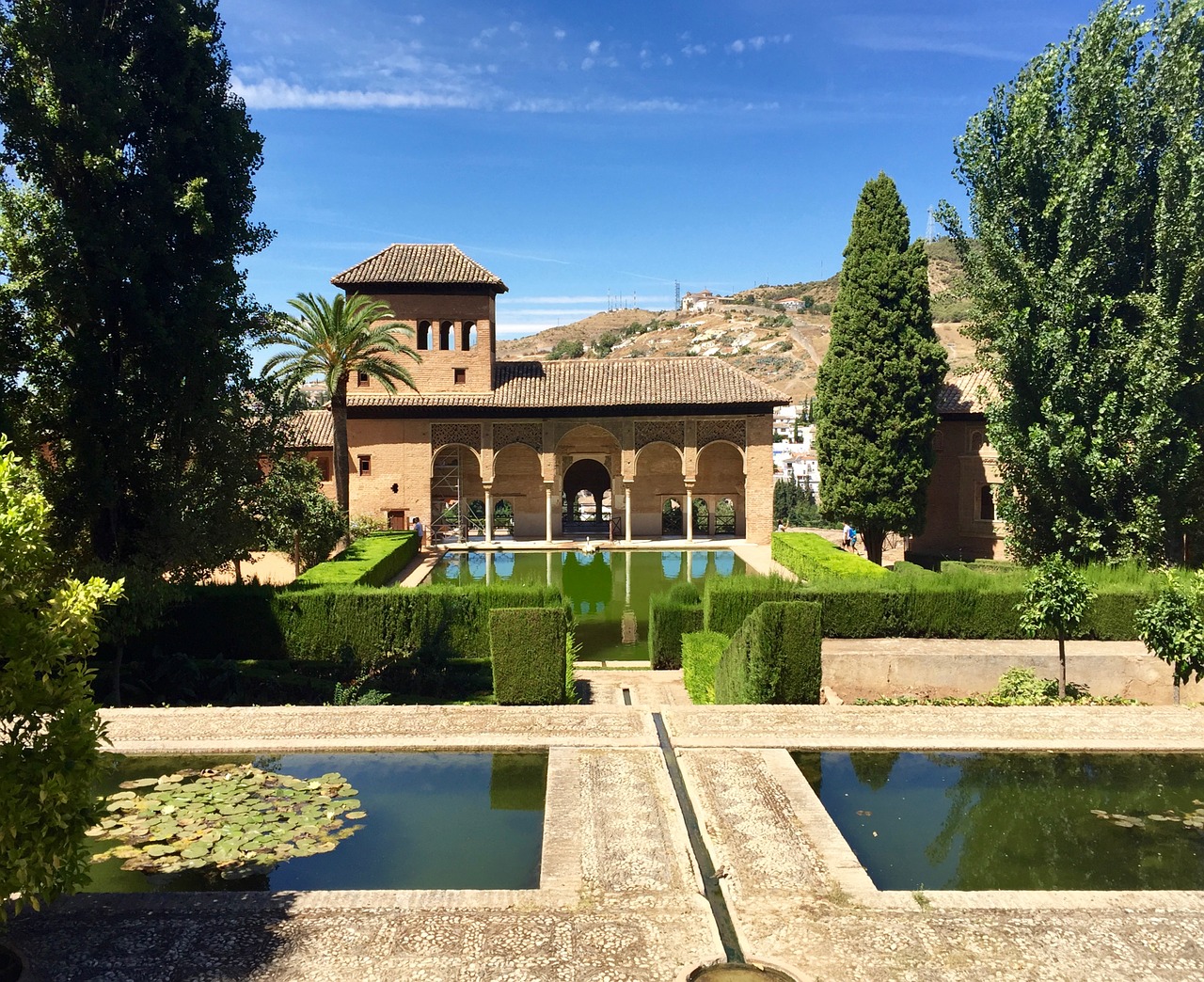
For those who love gardening, it is surely no secret that there are different types of gardens, depending on their vegetation and design. One of the most popular here in Spain is the Arab garden, which we can enjoy in many areas of the south of the peninsula. Among the best known in this country are the famous gardens of the Alhambra, for example.
If you are interested in the subject and want to find out more about the Arab garden, I recommend that you continue reading. We will explain what it is, what its characteristics are, how it is designed and what the most common plants are. I hope you find it interesting and informative!
What is the Arab garden?

Before mentioning the characteristics of the Arab garden, it is important that we discuss what exactly this type of garden is. It is a green space in which three elements predominate, which are fundamental to its design: Water, long pathways and aromatic plants. Another name by which it is known is the Islamic garden.
In general, gardens originating in the Middle East are fundamentally based on spirituality in order to achieve a symbiosis between the landscape, human beings and natural resources. So it's no wonder that they are immensely beautiful and calming places. The main objective of the Arab garden is offer a space for meditation in which people can connect with the environment and also with themselves.
Features
As we have already mentioned before, the fundamental elements in the Arab garden are the corridors or paths, the aromatic plants and the water. It is no mystery that the latter is scarce in the original region, which makes its value increase considerably. For this reason, Each garden offers strategies and methods to properly treat sewage and rainwater.
The ultimate goal of fountains, ponds, ramps and ditches is not just aesthetic. In fact are irrigation systems and water reservoirs that we can find in both public and private gardens. In Moorish gardens, these reservoirs connect directly to the plumbing system. Thus, these beautiful spaces are at the same time a system of distribution, collection and treatment of water. Basically it is an alternative to be able to face the extreme heat and drought in the Arab regions.

Just as water features serve a practical function, so do walkways. In each of the patios, these corridors facilitate the distribution of plants and water, giving rise to a special balance present in each garden. Through long corridors, each person has multiple options to find a space where they can completely relax. It should also be noted that the design and geometric distribution of trees, galleries and walkways are designed to offer the maximum possible comfort to both visitors and the plants that reside there.
For this reason, aquatic plants are also key. Thanks to their fragrances they help to purify both fountains and ponds. Also, they attract birds and butterflies. In this way, this space full of religiosity and also mysticism, which are fundamental in Arab culture, is completed.
Design an Arabian garden

Another aspect to consider is lighting. When it comes to designing an Arabian garden, it is imperative that during the day the trees provide shade and cool to protect visitors and other plant species from excess sun and heat. During the night, both the fountains and the ponds should be able to reflect the light of the moon and at the same time cool the night weather. Remember that an Arab garden must be in a warm climate due to the type of vegetation, in colder areas it will be very difficult to maintain it.
It should also be noted that this type of garden is usually distributed in a total of three levels. The objective of this design is to represent the oases that we can find in the Middle East. But how are these levels distinguished? Let's see it:
- First level: The shadow level. Here tall bushes and trees are planted with the aim of refreshing the environment.
- Second level: The level of flowering plants. This area must be full of flowering bushes, a real wonder for both sight and smell.
- Third level: The water level. This level is where most of the aquatic plants, fountains and ponds are found.
And a little advice: To make your stay in the Arab garden more pleasant and relaxing, a good option is Place benches in the patios and in the corridors. In this way, visitors will have the option to rest in the place that they most like in a comfortable and pleasant way.
Plants for the Arabic garden
We have previously mentioned the importance of both flowering shrubs and aquatic plant species. Neither of these two types can be missing in an Arab garden. However, it is essential select those species that are best adapted to the hot and humid climate. We are going to list some of the most suitable species for an Arab garden:
- Trees: carob trees, lemon trees, orange trees, olives, palms y Scots Pines.
- Flowering bushes: Oleanders, Bird from paradise, camellias, jazmines, hydrangeas, rhododendrons y roses.
- Aquatic plants: Inlets, water lettuce, lilies, Lily y oxygenating.
Despite not being a type of garden that we can have in our home (unless we have a very, very large piece of land), we can visit some of them in Spain and enjoy a beautiful and relaxing atmosphere. Without a doubt, it is an excursion that is well worth it.